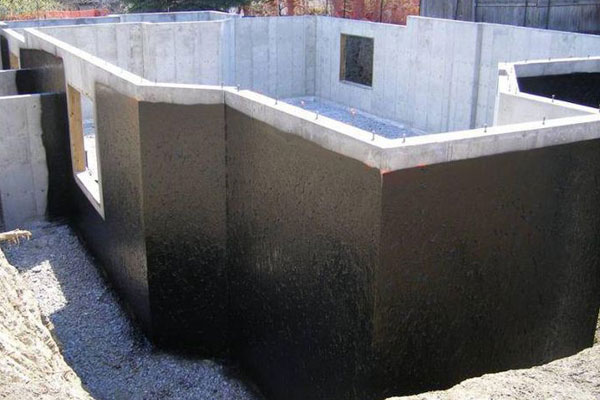Basement waterproofing involves techniques and materials used to prevent water from penetrating the basement of a structure. Waterproofing a basement that is below ground level can require the application of sealant materials, the installation of drains and sump pumps, and more. The spaces of basements are particularly prone to wetness and moisture development. Water in the soil causes hydrostatic pressure to be exerted underneath basement floors and walls. This hydrostatic pressure can force water through cracks, which can cause major structural damage as well as mold, decay, and other moisture-related problems. Major issues for this are Improper Soil and Drainage Systems, Poorly Installed Maintained Gutters, Improper Slope, Hydrostatic Pressure and Condensation, etc. Preventing all these is the aim of installing basement waterproofing.
Different types of basement waterproofing methods
Interior sealants
In poured concrete foundations, cracks and pipe penetrations are the most common entry points for seepage. These openings can be sealed from the interior. Epoxies, which are strong adhesives, or urethanes can be pressure injected into the openings, thus penetrating the foundation through to the exterior and cutting off the path of the seepage. Interior sealers are good for preventing high atmospheric humidity inside the basement from absorbing into the porous masonry and causing spalling. Interior sealants are designed to ensure that the atmospheric humidity level in the basement stays low. Using interior sealants to waterproof your basement prevents moisture from being absorbed by the basement walls and floors, and can also help prevent moisture from spilling to other parts of the house.

Interior water drainage
A drainage system can help avoid water buildup in your basement, moving the water from the footers of the house foundation and out below the basement floor. A common system for draining water that has penetrated a basement involves creating a channel around the perimeter of the basement alongside the foundation footers. A French drain, PVC pipe, or a patented drainage system is installed in the newly-made channel. The installed drain is covered with new cement. According to Rick Jacobs of Absolute Waterproofing Solutions, a basement waterproofing and foundation repair company, states like Michigan have a lot of ground clay, which will absorb and hold water, resulting in the flexing in basement foundation walls that can cause cracking and subsequent leaks.
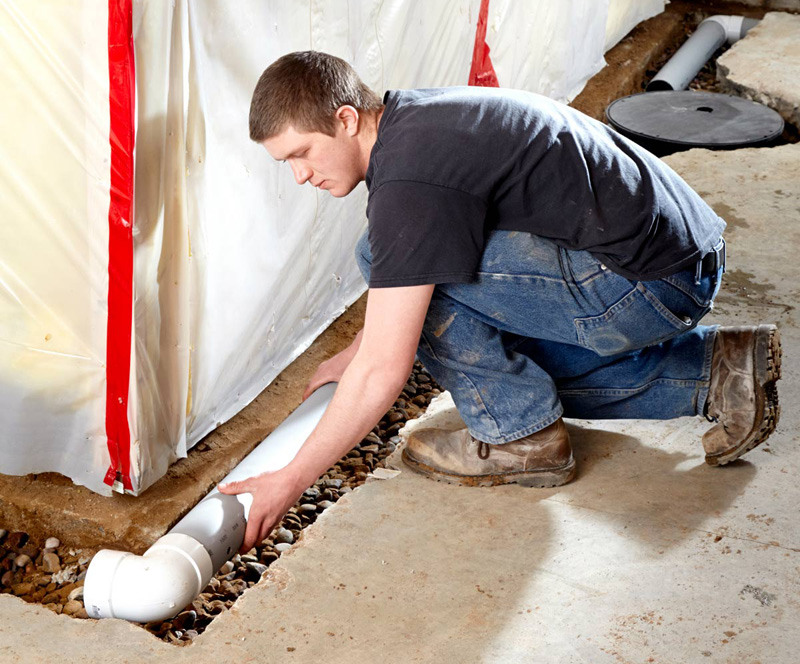
Exterior basement waterproofing
The exterior basement waterproofing method is designed to prevent water from causing any major structural damage to the building, using polymers and membranes to coat the exterior basement walls. Polymer-based products last for the lifetime of the building and are not affected by soil pH. Polymer-based waterproofing materials can be sprayed directly onto a wall, are very fast curing, and are semi-flexible, allowing for some movement of the substrate.
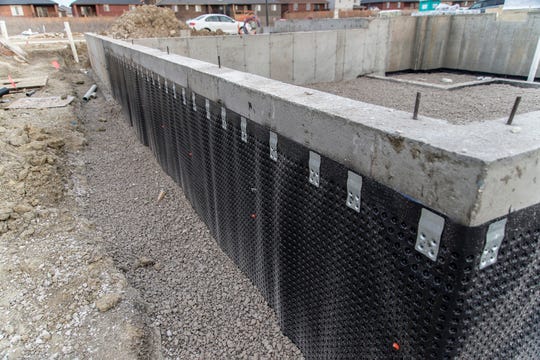
Interior basement waterproofing
Interior basement waterproofing using coatings is effective where condensation is the main source of wetness. It is also effective if the problem has minor dampness. Installing a backwater valve is one of the most effective measures to save your basement. Installing a drainage system is the most complex solution for interior waterproofing. Several approaches and materials can be used. One proper solution is a French drain with a sump pump installation, rubber walls, water weeping tiles, and a drainage membrane. That system allows water to effortlessly escape without damaging the walls.

Foundation crack injections
Foundation crack injections are used when poured concrete foundations crack either from a settlement or the expansion and contraction of the concrete. Epoxy crack injections are typically used for structural purposes while hydrophobic or hydrophilic polyurethane injections are used to seal cracks to prevent penetration of moisture or water. Injection sealing of the crack cavity will address the problem and can be done from the inside with minimal disruption. Our approach involves drilling a series of holes every 6 – 8″ intervals along the run of the crack. Each access hole is 3/8″ in diameter, set perpendicular to the run of the crack and angled at 45 degrees so that the drilled hole crosses the crack at the approximate center of the wall being treated thus ensuring the most effective distribution of sealant.
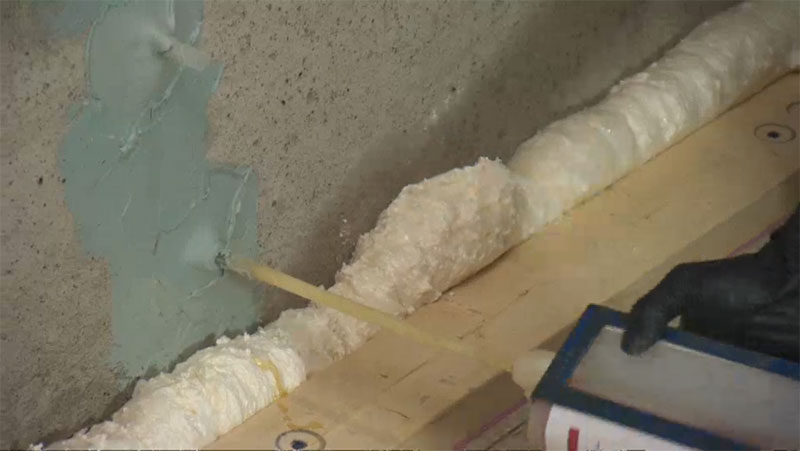
Different basement waterproofing products
With the growing demand, there has been evolution of different waterproofing systems. Companies are now focusing on innovative systems to cater the growing demand for basement waterproofing. Some of the popular systems are-
Waterproof seal – This system uses cell mesh that bonds with freshly placed concrete which acts as a seal. This prevents water ingress. It can be installed rapidly, with no need for blinding concrete, priming, or protection and can be trafficked immediately after application.
Polymer Modified Bitumen Coating – This is a fiber reinforced, two-component waterproofing compound system consisting of a rubberized bitumen emulsion with additives and a powder component. The application is easy even around details such as pipe penetrations, inner and outer corners, wall-floor junctions, etc.



EPDM waterproofing membrane – This is a single-ply rubber waterproofing membrane that is being used in the basement waterproofing. It is manufactured from synthetic EPDM rubber. The EPDM rubber waterproofing membranes are techno-commercially much better than substitutes.
Cementitious coating – It is an acrylic-modified, Portland cement-based flexible, waterproofing membrane used in the basement. This system resists positive and negative pressure under 100m head in water retaining and below ground structures.
New Build Reinforced Concrete – This is a cement-based waterproofing system used in the basement. It is applied to a concrete surface, the active chemicals combine with the free lime and moisture present in the capillary tract to form insoluble crystalline complexes. These crystals block the capillaries and minor shrinkage cracks in the concrete to prevent any further water ingress.
Advantages of basement waterproofing
Your basement is especially vulnerable to water damage because water can seep in through cracks in the foundation and poor heating or cooling can cause a buildup of moisture or condensation. So basement waterproofing is important. Its advantages are-
- Economical
- Better indoor environment
- Basement Floor Protection
- Prevention of basement flooding
- Protection to your sump pump
- Protection from structural damage
- Reduce Energy Costs
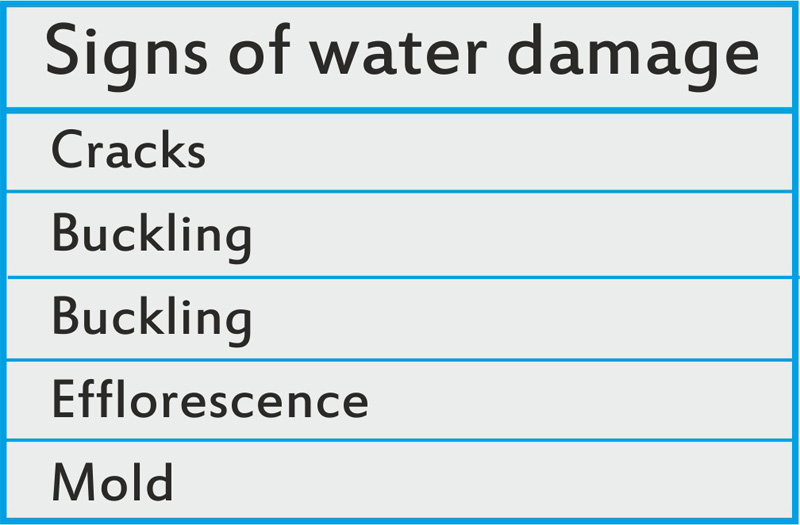
Conclusion
The choice of waterproofing system will depend on a number of factors such as the method & type of basement construction, the depth below ground, and the proposed end use. Water damage can cause major problems resulting in costly repairs. There are so many factors that come into play when it comes to keeping your basement safe. While each situation is different, the best policy is always prevention rather than repair. Reach out to experts and protect the basement.
Image Source: , gesealants.com, familyhandyman.com, rccwaterproofing.com, polygomma.com, dywaterproof.com, handitechbd.com, gannett-cdn.com,
